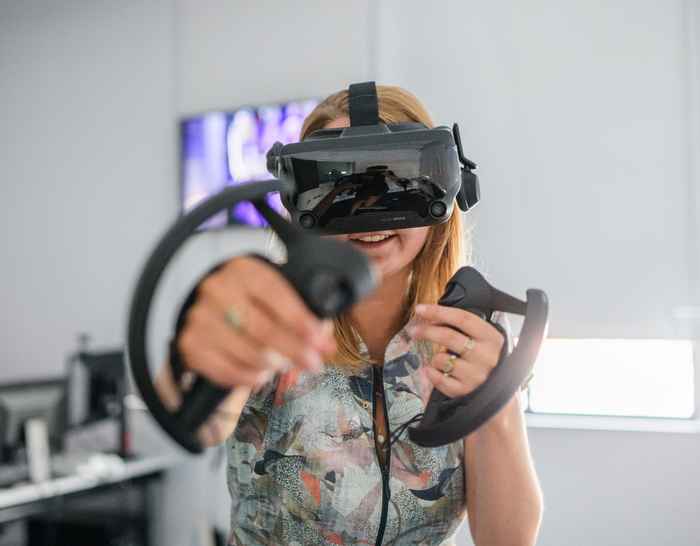Participate in Virtual Reality research

What to expect during a VR experiment
During VR research you will be temporarily immersed in a virtual environment. You will be equiped with a head-mounted display, so that your field of vision will be fully occupied by a virtual simulation. By means of headphones, your hearing will also be manipulated, so that your visual and auditory senses give you the feeling that this environment is 'real'. The expectation is that it will give us a reliable impression of how you would react to such situations in real life. You will receive information about the research in advance from the researcher. He or she will inform you about the background and purpose of the research.
What is expected of you during a VR experiment
You do not need to have VR experience to participate in VR research. Also, no experience with video games or simulations is required, unless specifically mentioned in the recruitment text of the study. Because each participant has unique eyes, the headset will be adjusted to the preferences and characteristics of the participant prior to the simulation. Sometimes physiological measurements are taken at the same time, for example to measure your heartbeat or skin conduction. This is done by electrodes on your fingers or a band around your diaphragm. All devices are cleaned and disinfected afterwards, so that they are completely refreshed for the next participant.
How to prepare for an VR experiment
Unless otherwise stated in the accompanying text of the research, no preparation is required for VR research. If you wear glasses you can just wear them. Lenses are no problem either. If at any time you feel nauseous, anxious or uncomfortable during the experience, for whatever reason, you can take the headset off, or ask the researchers to do so.
Can I participate in VR experiments?
In principle, anyone can participate in VR experiments. Always take a close look at which target group is being sought for the research for which you are registering, and whether you belong to that target group.